
Hidden Gems: Nintendo Gamecube.
Paul
Adam
It’s almost hard to believe that just one generation ago Nintendo were languishing in third place in the console wars behind Microsoft and Sony (tell kids that today and they’d never believe you). Especially as these days Nintendo could literally shit on the floor and you’d have casual gamers queuing around the EARTH to rub their own faces in it.
Unfortunately for them, the Gamecube just didn’t capture the public’s imagination. Probably because it looked like stupid Fisher Price toy. Still, it did have a few solid titles (including Game of ALL TIME, Resident Evil 4).
Here’s Paul and Adam (and a quick interlude from Matthew) to guide you through those bargain bins before Gamestation set fire to them.
Unfortunately for them, the Gamecube just didn’t capture the public’s imagination. Probably because it looked like stupid Fisher Price toy. Still, it did have a few solid titles (including Game of ALL TIME, Resident Evil 4).
Here’s Paul and Adam (and a quick interlude from Matthew) to guide you through those bargain bins before Gamestation set fire to them.

Paul
The game most people heard of but happily passed them by, Killer 7 was, and still is unlike anything else you’ve played before. Showcasing the talent the Japanese have for mind-bogglind plots and acid-like visuals Killer 7 came along nearly three years after it was first announced. During that time virtually no one outside of Capcom had a clue how to categorise it, and even to this day it’s a tricky one to classify.
The control system may have been simplistic on rails fare, but the combat was incredibly intuitive. Pressing the right trigger launched you in to a first person perspective in which you defeated enemies by hitting a glowing weak spot on their body. The enemies slowly became more complex as the game progressed with the player being forced to execute different tactics in order to hit the weak spots.
Killer7 often saw you switching between the seven split personalities of lead character Harman Smith, each of which possessed a unique weapon or ability and this saw a huge variation in the way each player approached a mission. A player would often have to change personality several times in one mission in order to overcome numerous character-specific puzzles.
Save points were few and far between and many of the enemies were hellishly difficult to defeat, but the mind-boggling plot and unconventional gameplay meant that Killer7 was a unique, refreshing and incredibly challenging experience. It’s certainly not for everyone but it’s easily one of the Cube’s finest hidden gems.
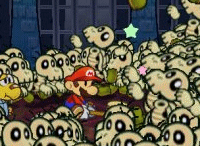
Adam
Nintendo are often criticised for the recycling of their mascots, but what detractors fail to realise is how often each series is used as a safe platform for innovation. The Mario RPG series is Nintendo’s opportunity to poke fun at it’s most esteemed franchise and The Thousand-Year Door did it best, whist being one of the greatest and certainly most accessible JRPGs ever made. Hell, it’s also a pretty good platformer, so God knows why I traded it in!
Many games try to do humour, but most come off as being obnoxious, juvenile or simply Japanese. The Paper Mario universe is genuinely funny (at the very least, charming) in a Homestar Runner sort-of way. The cursed chests that trick you every time into opening them are especially a lark, while Peach’s sub-plot is surprisingly engaging. Mario, of course remains the proud, silent Buster Keaton-type in a pantomime world of eccentric down-and-out cut-outs, many of whom join his party and add their unique attacks to the ingenious battle system.
Speaking of battling; the implementation of it here is just superb. You either initiate or avoid the initial attack in real-time, then the world becomes a stage upon which you fight for the pleasure of an audience of rowdy Goombas. The attacks are turn-based, but each can be augmented by QTE unique to each character (Admiral Bobbery FTW). Some of bosses are truly screen-filling affairs that require the collection and proper combination of stat-boosting badgers.
The innovation extends across the whole game: the paper-folding mechanics to reach hidden areas; the recipe system for making items; and a Pikmin-inspired bit that will stay with you forever. It have Mario in the title, but it’s still a hidden gem.
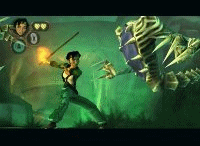
Paul
When Michael Ancel wasn’t making shit games like the Rayman sequels he was busy making competent action-adventure games like Beyond Good and Evil. Actually this is probably the last good game he made (unless you count that King Kong game) and as Ubisoft are too busy making Tom Clancy games at the moment it’s looking as though Beyond Good and Evil could remain Ancel’s magnum opus for some time. Shame that hardly anyone bought it, as it’s fantastic.
Nothing to do with Nietzsche, Beyond Good and Evil had that odd combination of action-adventure and elements of the stealth genre. This can so often be a recipe for disaster – I only need point you in the direction of the times that Zelda games have dabbled in the genre with varying levels of success – but somehow Beyond Good and Evil pulled it off. It was challenging, but at no point did you feel the urge to hurl the pad through a window. Game play was divided in to three basic sections – platformer (reminiscent of Zelda), stealth sections and some rather tiresome vehicle sections which put you in control of either a hovercraft or an aircraft.
Beyond Good & Evil is one of those action-adventure games that are rarely made anymore. Polished graphics, a fantastic story, an immersive universe, good voice acting and characters you sort of sympathised with. It may have started to sag a bit in the last few hours or so, and that cliffhanger ending wasn’t exactly welcome, but all in all Beyond Good and Evil was a great action-adventure game.
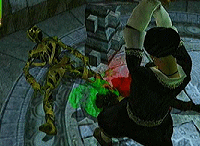
Adam
The strange yet successful concoction of point-and-click adventure and survival horror is the reason why Eternal Darkness: Sanity’s Requiem is one of my favourite games. The layered tale of the many people throughout history who became entangled in the affairs of the Ancients – competing deities of chaos who operate on our plane pf existence through the service of their vile Liche, Pious Augustus – provides one of the riches narratives seen in a game outside of an RPG. Each of their stories is told in the present by narrator Alex Roivas, who has discovered them in the Tome of Eternal Darkness while investigating her grandfather’s mysterious murder.
This book of flesh and bone also encompasses the use of Magik, with which you can enchant weapons, summon creatures and bind those of a different Magik in a rock-paper-scissors fashion. For you see each of the enemy gods is aligned to a certain game attribute; Ulyaoth is master of reality; Xel’lotath is mistress of sanity; Chattur’gha is the mighty; and Mantorok is the balance. Which one you choose at the start of the game affect how the rest is played, for example should you pick Xel’lotath you are more likely to suffer the (in)sanity effects that famously cause the sound to spontaneously mute, walls to bleed and statues to follow your movements.
The sheer range of these effect, whether in the middle of combat or in a supposed safety of the hub world, on top of some truly disturbing set-pieces (a messenger to Charlemagne to Frank who slowly zombifies over the course of his level) make for the worst sense of dread in a game maybe ever. Even the unlockable true ending isn’t much comfort.
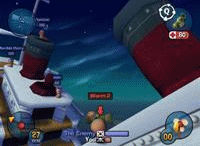
Paul
I know what you’re thinking. Worms 3D was shit. Actually, you’re wrong if you’re thinking that. Forget for a moment that this is Worms made by the same Team17 who created arguably one of the greatest strategy games of all time, and consider Worms 3D a completely different game then what you’ve actually got is one of the most enjoyable strategy games available on the Gamecube.
In many respects it was a lot like Hogs of War. Once again gameplay was turn based, with each player taking turns to kill each of the other Worms belonging to the other player. You don’t need me to explain the concept of Worms to you and if you do then, please, just leave. You’re not welcome here.
First person perspectives were now possible which made many of the game’s more dominant weapons, such as the shotgun far more accessible and easy to use. The level designs were far larger and varied than they had ever been in 2D with an eclectic mix of terrains available and the option to randomly generate maps. There were also further options to customise maps with the editor which gave a wealth of new options.
Faults you could level at Worms 3D would be that the first person options removed an element of skill present in the 2D incarnations. It may no longer have been much of a challenge to pull off a swanky shot with the bazooka, but if anything this just created a different approach to the combat. The final fault would have to be the title music. Junior Senior were never good, and having “Shake Your Coconuts†blare out at you every time you fired it up was incredibly unpleasant. Worms 3D was a step in the right direction for the franchise and I’d be happy to see more stuff like this from Team 17 in the future. Just bring back the old Worms theme next time.
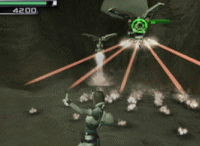
Adam
The GameCube may have been tarred with the Fisher Price brush, but it was home to some of the hardest games of last generation. The Resi Remake; Viewtiful Joe; Ikaruga; and Project Number Three. At it’s release P.N.03 was unfairly dismissed out of hand for being too damn hard and as a result earned plenty of fifty percent scores and the derision of it’s own designer, Shinji Mikami (the man behind most of the famous Capcom 5). But when people look back, it’s better to be remembered for being infamous than blaverage.
In terms of the amount of restarts, this is practically a scrolling shoot-em’ up. The protagonist – svelte Iron Woman, Vanessa Z. Schneider – fires a limitless supply of laser beams while moving ever forward through the ranks of a faceless robot army; dodging enemy fire that could kill her with a single hit; charging up her screen-clearing special-attack meter; finally facing a fifty-foot high boss. At least that’s the plan.
The difficulty is mostly due to a control scheme that limits you the running forwards or dodging. No circle strafing ala every other game in existence, because that would make life too easy. Instead you’re forced to rely on your timing and sense of rhythm to survive on this battlefield, to the point where the game feels like a protracted version of the ‘lobby shootout’ from The Matrix. And if that sounds a bit repetitive, ask yourself how many times you’ve watched that scene.
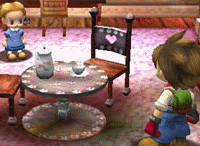
Paul
Perhaps not one that you’d classify as a hidden gem as the Harvest Moon series is one that’s fairly well acknowledged, but seeing as it would seem that few people played A Wonderful Life then I’ll go on that premise.
A Wonderful Life’s slow pace and relaxed gameplay are quite unlike anything else on the market. The closest thing you could possibly compare it to is Viva Pinata, but whilst Viva Pinata’s primary focus was the gardening, A Wonderful Life saw the player building up close personal relationships with the locals. Farming was still the game’s main emphasis of course but A Wonderful Life revolved heavily around getting to know the locals, integrating with the community and, eventually settling down and starting a family. It’s up to you to go from simple vegetable farmer to a fully fledged cattle farmer and it’s a phenomenally satisfying experience to receive your payment after shipping off your first load of produce.
A Wonderful Life also had some of the most genuinely heartbreaking cutscenes you were ever likely to see in a video game. An animal falling sick, or passing away would trigger sequences that were virtually impossible to watch without getting a lump in your throat. It’s incredibly rare for a game to evoke this sort of reaction and this was one of the many rare things that Harvest Moon was able to pull off so beautifully.
Despite the slow pace A Wonderful Life warrants returning to and even in short bursts it’s incredibly compelling. If you don’t own it you really do owe it to yourself to get hold of a copy. It’s one of the most achingly beautiful video games you’re ever likely to play.
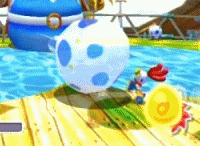
Adam
With the platformer all but dead save for the expeditions of Mario, it is necessary to journey to the past to experience the delights of this frivolous genre.
Billy Hatcher certainly brings something new to mix, with his Giant Egg, chicken-suit and a world sunnier than Mario Sunshine’s. As the eponymous boy-wonder, your task is to restore morning to the Land of Chickens by hatching eggs with fruit and bowling over or into the feckin’ crows who make up your strangely non-avian adversaries.
The eggs are essential for mobility, defense and offense; while hatching them often reveal power-ups or creatures essential for opening up paths. There are 72 different kinds of egg, with some just offering stat-boosts, while others allow you to ride your ovum like a circus-performer. They break from a few hits, but can be bolstered with fruit juice to the point where they are large enough hatch or dish out extra damage.
Each of the worlds is as cliche as they come, but the linear design and time-trial nature of the levels make the game a breeze to play. Regardless of how many times you fall to your doom, your resolve is never likely to crack, thanks to the pick-up-and-play nature, cheery music (the Saturday Kitchen theme-tune, for example) and overall non-serious tone that’s so rare in modern games. The whole experience feels like Mario Galaxy does, years before that seminal classic was even heard of.
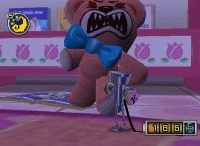
Matthew
Chibi-Robo then, one of the rarest Gamecube games and I had to shell out almost £40 for a pre-owned copy from Ebay. The story basically involved said robot being bought by the father of the Sanderson family for his daughter’s birthday. You take the role of Chibi-Robo with the main aim being to spread happiness within the household. This involves doing various things such as picking up rubbish, cleaning dirty footprints and destroying robot spiders. Each time you complete one of these, you gain happiness points which increase your Chibi-Robo ranking, with your main goal to become number one and achieve the title of “Super Chibi-Roboâ€. As you move higher up in the rankings, you gain a better, longer-life battery so you don’t have to find plug sockets to recharge so often.
The game takes place in various rooms of the Sandersons’ house and there are no levels as such, each session ends when the day/night is finished and you return to your own Chibi-House to recharge, save, check your stats etc. Throughout the game you unlock new items allowing you to reach the other rooms in the house and progress the story.
That’s pretty much all I’ve got to say about the game since for no apparent reason it decided to delete my save and I can’t be arsed starting it from scratch again just now, possibly will during the next game drought. All-in-all, it is fun and charming game and if you happen to come across this pre-owned it is definitely worth it.
